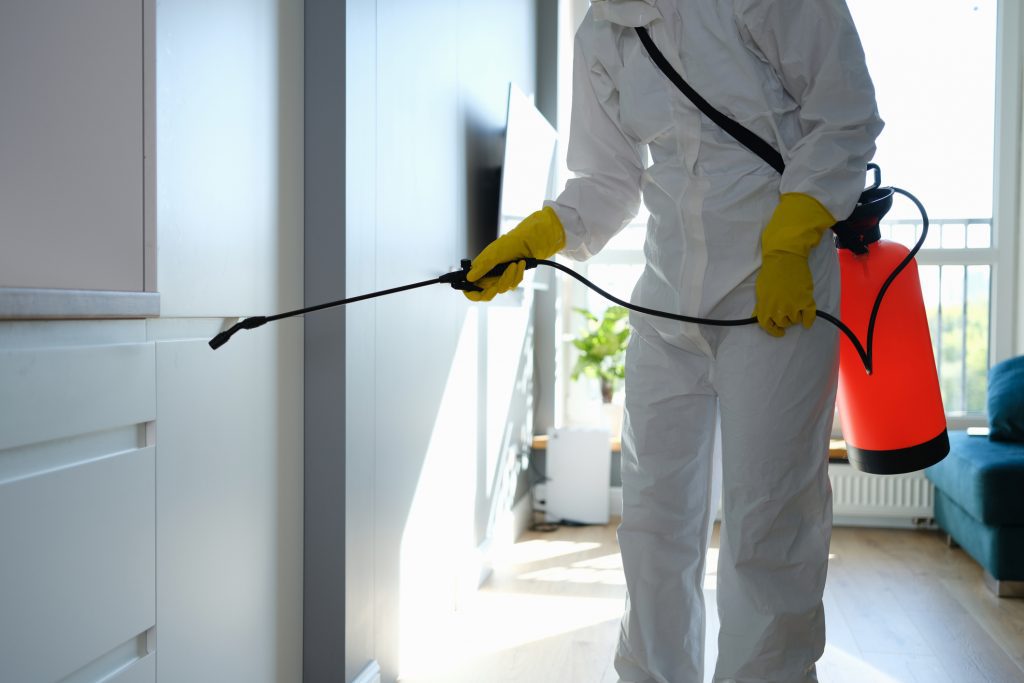Eco-Friendly Insect Control Approaches for Managing Wild Animals in Urban Areas
Urban locations often discover themselves at the intersection of human activity and wild animals, leading to distinct difficulties in bug management. These approaches not just protect the atmosphere but additionally enhance neighborhood interaction in wild animals monitoring. As metropolitan populations continue to grow, understanding the dynamics of wild animals communications comes to be progressively essential.
Understanding Urban Wild Animals Dynamics
Comprehending Urban Wildlife Dynamics is necessary for creating effective and eco-friendly pest control techniques. Urban locations are significantly becoming habitats for various wild animals varieties, driven by variables such as environment fragmentation, food accessibility, and human advancement. Acknowledging these characteristics enables for a nuanced strategy to pest monitoring that straightens with eco-friendly concepts.
Urban wildlife commonly consists of species such as raccoons, squirrels, and birds, which adapt to city environments, locating specific niches in eco-friendly rooms, parks, and also household areas. Their visibility can bring about problems with human beings, especially when they manipulate human resources for food and sanctuary. Understanding the actions and eco-friendly roles of these species informs strategies that reduce negative communications while promoting biodiversity.
In addition, recognizing the interdependencies within urban ecosystems aids in determining crucial areas for environment preservation and reconstruction. This knowledge adds to the advancement of integrated parasite management (IPM) strategies that take into consideration the eco-friendly equilibrium, thereby lowering reliance on hazardous chemicals. By promoting coexistence between human beings and metropolitan wildlife, cities can produce healthier settings that profit both homeowners and neighborhood environments, leading the way for sustainable metropolitan living.
Natural Repellents and Deterrents
Natural repellents and deterrents supply a sustainable choice to traditional parasite control approaches by using the power of nature to keep unwanted types at bay. These eco-friendly solutions commonly use plant-based active ingredients, important oils, and other naturally taking place materials that discourage bugs without hurting the atmosphere.
One effective all-natural repellent is peppermint oil, which is understood to drive away rodents and insects. Its strong scent is unpleasant to several parasites, making it a preferred choice for city settings. Vinegar and citrus peels can offer as deterrents, as their solid smells are generally unappealing to numerous wild animals.
Additionally, diatomaceous earth is an all-natural powder that can be spread in areas vulnerable to pest activity, effectively dehydrating and deterring insects without posing dangers to non-target types. Garlic sprays and neem oil are acknowledged for their capacity to fend off a wide range of insects, including both pests and bigger wildlife.
Applying these all-natural repellents not just reduces reliance on chemical pesticides but also advertises a healthier urban community, promoting a more well balanced coexistence in between people and wild animals. By using these techniques, metropolitan locations can effectively take care of insect populations while reducing ecological influence.
Habitat Adjustment Techniques
Efficient environment alteration methods play a critical role in sustainable bug administration by modifying the atmosphere to make it much less for pest invasions. By understanding the eco-friendly dynamics of urban locations, residential property proprietors can apply tactical adjustments that prevent parasites while advertising biodiversity.
(Integrated pest management Port Charlotte)One primary strategy includes keeping appropriate cleanliness. This includes routine waste removal, safeguarding garbage bins, and getting rid of standing water to reduce breeding sites for bugs and rodents. Furthermore, landscape design methods such as selecting native plants can improve eco-friendly balance, providing environments for beneficial microorganisms while reducing sources for insects.
One more vital approach is to secure entrance points in buildings. Examining and fixing splits in foundations, wall surfaces, and home windows can considerably minimize parasite gain access to. Additionally, creating physical obstacles, such as fences or plant buffers, can hinder wild animals activity right into human-inhabited areas.
Integrated Bug Monitoring Practices
Structure upon environment adjustment methods, integrated parasite management (IPM) practices supply an alternative method to controlling bug populations while reducing ecological influence. IPM integrates various methods, including organic, cultural, mechanical, and chemical controls, to accomplish reliable bug management.
Organic control involves the introduction of all-natural predators or bloodsuckers to decrease parasite populations. Social practices, such as plant rotation and cleanliness, interfere with pest life cycles and lessen their habitats - Pest control service. Mechanical controls, like traps and barriers, give immediate alleviation from pest pressures without chemical treatment
Chemical controls are utilized as a last resource, concentrating on targeted applications that restrict harm to non-target types and the setting. The selection of eco-friendly pesticides, when essential, is important to the IPM structure. In addition, keeping an eye on my latest blog post parasite populations and assessing prospective damage assists notify decision-making, guaranteeing that interventions are prompt and efficient.
Area Involvement and Education And Learning

(Mosquito Misting Systems)Workshops and informational sessions can outfit locals with understanding concerning native types, environment preservation, and effective non-toxic bug monitoring techniques. Partnership with institutions, neighborhood companies, and government agencies even more improves instructional outreach, guaranteeing that necessary details reaches diverse audiences.
Furthermore, community-led campaigns, such as area clean-up days and environment restoration projects, not only promote biodiversity but also enhance community ties. Pest control service. By motivating locals to share their experiences and observations, communities can establish targeted techniques that attend to specific neighborhood insect problems
Integrating comments from locals into pest monitoring prepares allows an extra responsive and adaptive technique to wildlife obstacles. Ultimately, educated and involved neighborhoods are crucial to achieving long-term success in green bug control, causing healthier urban settings that appreciate both human and environmental needs.

Final Thought
Finally, environment-friendly bug control comes close to offer lasting options for managing city wildlife. By focusing on habitat alteration, utilizing all-natural repellents, and implementing incorporated pest administration practices, neighborhoods can cultivate a harmonious conjunction with regional fauna. Moreover, involving locals via education and learning boosts awareness and motivates accountable wild animals interactions. Ultimately, these methods not only shield biodiversity but likewise advertise ecological health, guaranteeing city locations remain dynamic environments where human beings and wildlife flourish together.